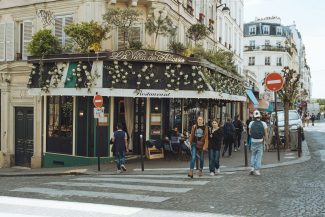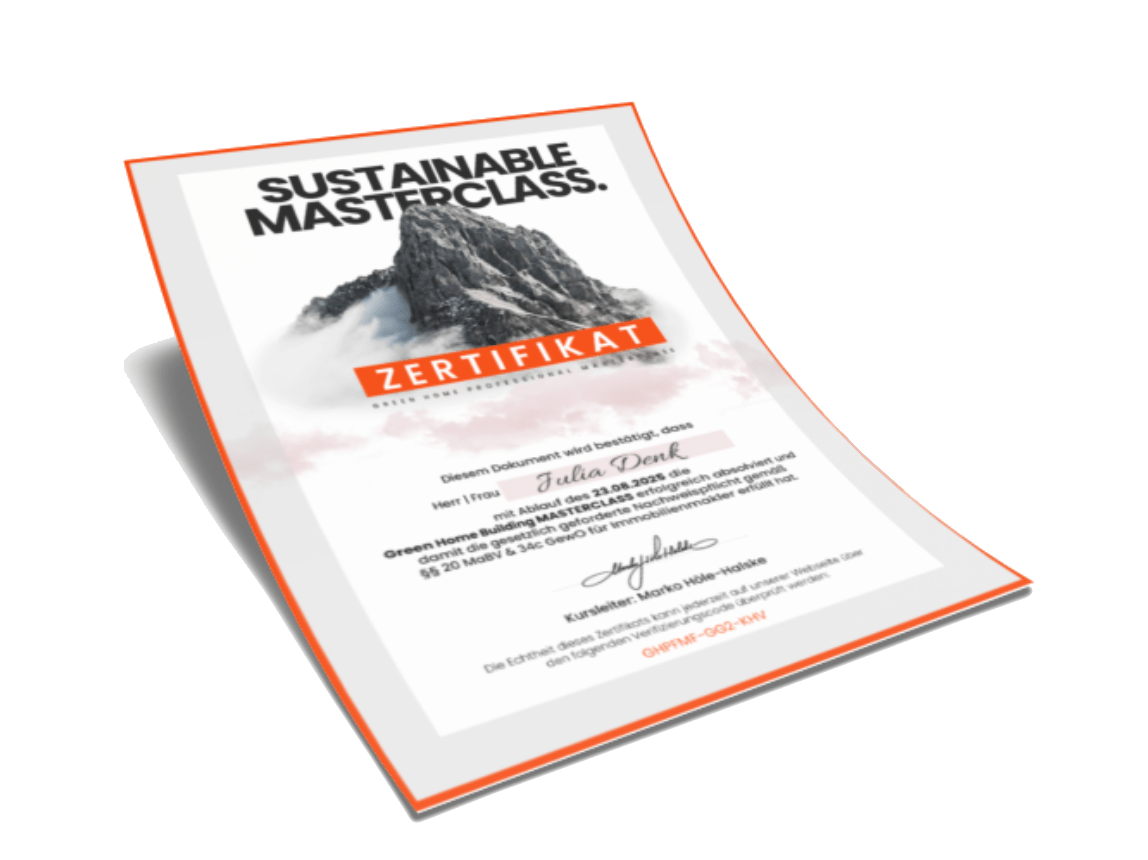Portugal 2030 – The Portuguese construction and real estate industry is undergoing a fundamental transformation. Driven by a combination of national environmental goals (Portugal 2030) and a growing consumer awareness, the market for sustainable building has evolved from an idealistic niche into a dynamic and lucrative sector. While the focus has long been on energy efficiency, the new strategic advantage now lies in a holistic approach that places the health and well-being of occupants at the center. Portugal 2030
This comprehensive guide will provide a detailed overview of the most important trends, the certifications that prove a project’s quality, and the crucial financial incentives that are making sustainable projects in Portugal not just an environmental choice, but an economically sound one. In this dynamic environment, a focus on health and well-being is a key differentiator. For example, Mezzalyn is uniquely positioned to address this growing market demand by prioritizing health and going beyond mere efficiency goals.
1. The Changing Landscape of Sustainable and Healthy Construction in Portugal
The Portuguese market is shifting from a sole focus on environmental impact to a more human-centered approach. A key driver of this change is the concept of healthy construction, which is now at the forefront of a new generation of building projects. The market has recognized that a building must not only be energy-efficient but also a healthy and vitalizing living space.
Studies have shown that improved indoor air quality can significantly boost productivity in offices, while adequate natural lighting enhances well-being and work performance. The international BREEAM certification, for instance, explicitly evaluates the creation of healthy environments, the promotion of occupant well-being, and the consideration of thermal and acoustic comfort. This demonstrates that the market’s focus has expanded: from minimizing the ecological footprint to maximizing human benefit.
This shift is further fueled by the demand for healthy, low-pollutant materials. Consumers are showing a growing interest in ecological options like certified timber and recycled materials. Companies like Natura Materia and Pinho&Palha have specialized in this niche, offering materials such as hemp concrete and cork boards , as well as straw and wood panels. These materials not only contribute to a positive environmental balance but also to a healthy indoor climate, as they “breathe” and wick away moisture. The use of materials like hemp concrete and cork boards ensures a consistent temperature and pollutant-free air, which directly improves occupant well-being. Companies that specialize in such solutions create added value that goes far beyond mere aesthetics. The use of these materials is a concrete expression of the move towards
healthy construction.
Another key trend is bioclimatic design. This architectural philosophy uses the natural conditions of the Mediterranean climate to maximize building efficiency. This involves incorporating factors such as solar orientation, dominant winds, and the topographical features of the site into the design. This integration is not just a matter of aesthetics; it is an intelligent response to climatic conditions. By optimally utilizing solar radiation and wind direction, a building reduces the need for artificial cooling in the summer and heating in the winter, which significantly lowers operating costs. A building that harmonizes with its surroundings requires less artificial heating or cooling while providing greater comfort for its occupants. This integration of environment and design is a key to success in today’s market.
2. The World of Certifications: A Guide to Excellence (Portugal 2030)
Certifications are the currency of trust in the sustainable construction industry. They provide a transparent, measurable basis to evaluate building performance and give confidence to investors, developers, and end-users. In Portugal, several systems dominate the field, both international and local.
International Giants: LEED & BREEAM
The certification systems LEED (Leadership in Energy and Environmental Design) from the USA and BREEAM (Building Research Establishment Environmental Assessment Method) from the UK are globally recognized leaders. Edifícios Saudáveis, a pioneer in the Portuguese market, was responsible for the first LEED and BREEAM certifications in the country. The company also achieved the first LEED GOLD certification on the Iberian Peninsula and the first LEED PLATINUM certification for a supermarket in Europe. This underscores the significance of these standards in the Portuguese market. LEED and BREEAM evaluate buildings across a wide spectrum, from energy and water efficiency to material selection and indoor air quality. They are an essential tool for demonstrating the sustainability of properties and differentiating them in a competitive market.
The German Standard: DGNB
In addition to LEED and BREEAM, the German DGNB system is also recognized as a relevant international standard. It is distinguished by its holistic evaluation, which considers not only environmental and economic performance but also sociocultural aspects like a building’s functionality.
The Local Champion: LiderA
A deep understanding of the local market is incomplete without the LiderA System. LiderA is a voluntary Portuguese system specifically developed for the local context and recognized by the Instituto da Habitação e da Reabilitação Urbana (IHRU). The system evaluates building performance based on six principles, ranging from local integration to socioeconomic experiences. Its classifications range from G to A+++, with A+++ representing a regenerative state. The system is not just an evaluation; it is a guide that includes six principles for good environmental performance: local integration, resource management, emissions management, quality of service and resilience, socioeconomic experiences, and sustainable use. This broad coverage makes LiderA a comprehensive tool for projects seeking a local connection. The LiderA system is of great importance for local developers, especially for projects aiming for government funding under “Habitação de Custos Controlados” (controlled housing costs).
3. Financing the Sustainability Transition: State and Private Incentives
The decision to invest in sustainable and healthy building in Portugal is increasingly driven by strong financial incentives. The government, in collaboration with the European Union, has created a comprehensive network of funding programs to accelerate the transformation of the construction sector. For developers, architects, and investors, these programs are not an optional bonus but a crucial tool for making projects economically viable and maximizing their return on investment (ROI).
The Foundation: National and EU Strategies
The financial framework for sustainable building in Portugal is deeply rooted in national and European climate and economic strategies. The country has committed to achieving carbon neutrality by 2050. This ambitious goal is concretized by two main programs at the European and national levels: the
Plano de Recuperação e Resiliência (PRR) and Portugal 2030.
The PRR, a central pillar of the EU-wide recovery program, provides Portugal with grants of around 14 billion euros, to be implemented by 2026. The program is organized into three strategic dimensions, of which the “Transição Climática” (Climate Transition) plays a key role. The
PRR aims to promote sustainable growth and strengthen the economy’s resilience by investing in areas such as energy efficiency, decarbonization, and infrastructure.
Portugal 2030 is a long-term partnership agreement with the European Commission that mobilizes a total of 23 billion euros in European funds for the period from 2021 to 2027. A central component is the “Programa de Sustentabilidade,” which is endowed with 3.1 billion euros to address the challenges of the climate and energy transition. Specifically for companies, the measure
“Descarbonização das Empresas” (Decarbonization of Companies) was launched, with a budget of 205 million euros. It supports projects that reduce energy consumption and greenhouse gas emissions and enhance the competitiveness of companies.
Key Funding Instruments in Detail
For construction projects in Portugal, there are several concrete funding instruments aimed at different target groups and project phases.
Fundo Ambiental
The Fundo Ambiental is a central mechanism for implementing policies in the areas of climate change, water resources, and waste management. The “Programa de Apoio a Edifícios Mais Sustentáveis” (Program to Support More Sustainable Buildings) under this fund has a total allocation of 100 million euros and is aimed at owners and tenants of private residences. The program covers up to 85% of eligible costs, with a maximum of 7,500 euros per person or household. This demonstrates how serious the government is about supporting the population in implementing these measures. Further proof of the program’s importance is the massive budget increase. In January 2025, the initial allocation of 30 million euros was topped up with an additional 60 million euros, underscoring the high demand and success of the initiative.
PRR and Portugal 2030 Incentives for Companies
While some programs target individuals, the PRR and Portugal 2030 funds are specifically designed for companies and larger projects. The application procedures are designed to accelerate project implementation. Companies can submit a “Registo de Pedido de Auxílio” (RPA), or Request for Aid Registration, to secure the eligibility of their investments even before the official opening of a call for proposals. This is particularly advantageous for projects that require a long planning and lead time, such as the procurement of special equipment or the hiring of specialized service providers. The funding can cover a variety of costs, including construction and renovation, specialized services, and even the costs for certifications like LiderA.
Alternative and Private Financing
In addition to the large government programs, private and alternative financing mechanisms also complement the landscape to support sustainable construction in Portugal. The European Investment Bank (EIB) has partnered with União de Créditos Imobiliários (UCI) to finance “green and sustainable housing projects”. Furthermore, alternative forms of financing like crowdfunding and participation models (associação em participação) are gaining importance.
4. Conclusion: A Financial Incentive to Act – Portugal 2030
The financing landscape in Portugal is a crucial catalyst for the sustainable building transition. The abundance of state and private incentives transforms sustainable construction from an idealistic concept into an economically rational decision. For developers, architects, and investors, it is no longer just about protecting the environment but also about increasing the value of their properties, minimizing regulatory risk, and benefiting from generous subsidies. The ability to navigate this complex web of regulations and programs is invaluable.

Photo by unsplash.com hiking_corgi







